I.O.O.F. Temple, Raleigh, N.C.
This week for Flashback Friday we feature a 1920s era ‘white border’ postcard depicting Raleigh’s oldest standing ‘skyscraper’ — the Independent Order of Odd Fellows (I.O.O.F.) Building. A familiar downtown Raleigh landmark, the building towers over the corner of Hargett and Salisbury Streets.
There is no message written on this week’s card, but the brief printed description notes that the
Odd Fellows Temple and Office Building contains 110 Offices. The Lodge Room is located on the ninth floor with balcony on tenth.
I’m not sure what the ‘balcony’ on the tenth floor refers to. Perhaps there was a mezzanine level above the lodge hall in the early days. As a result of many renovations over the years, this ‘balcony’, or mezzanine level, has probably been lost.
Seasoned Goodnight, Raleigh! readers may remember that the Odd Fellows Building was featured in one of our early posts five years ago. The author, John Morris, now GNR publisher emeritus, followed up that article with a dramatic aerial shot of the building a year later.
Not Just for ‘Odd Fellows’ Anymore
Raleigh’s beautiful Odd Fellows Building was designed by the renowned Atlanta architect G. Lloyd Preacher. His firm specialized in commercial office, hotel, and apartment buildings. The I.O.O.F. Building was erected in 1924, and is a textbook example of the commercial neo-classical style, favored by urban developers and architects of the 1920s. It is a steel frame and concrete structure faced with buff-colored brick and embellished with molded terra-cotta ornament.
The photo above shows the Odd Fellows Building as it appeared in the 1940s, dominating the corner of Hargett and Salisbury Streets as is does in our 1920s postcard view. Below is a comparative photo taken last year.
The I.O.O.F. Building’s decorative classical terra-cotta detailing of the lodge hall floor and its massive cornice are seen in this photo.
Here is a closer look at the extensive terra-cotta ornamentation of the I.O.O.F Building.
The Independent Order of Odd Fellows is a benevolent, charitable organization dedicated to assisting those in need through works of Friendship, Love, and Truth. These precepts are represented in their iconic ‘Three Link Emblem.’ The Order traces is founding to 18th century England, and was established in North America in 1819.
Below is the granite cornerstone of the I.O.O.F. Building, featuring a carved representation of the ‘Three Link Emblem.’
After 60 years of ownership, Raleigh’s Sir Walter Lodge of the I.O.O.F. sold their landmark building in the 1980s. It is now officially known as the Commerce Building, and is occupied primarily by various professional offices. A retail presence reemerged on the scene last fall with the opening of Deco Raleigh. The gift shop and gallery is located in the prominent corner space at street-level.
The Odd Fellows Building has been designated a Raleigh Historic Landmark and is within the Fayetteville Street Historic District. It is on the National Register of Historic Places.
Our featured postcard this week is known as a ‘white border’ card.
A White Border Card is a type of postcard issued between 1913 and 1939. Cards with white borders did not have to be carefully trimmed and were cheaper to produce [than a full-frame card] because they used less ink and paper. High numbers of these cards were produced from WWI through the 1920’s. The depression of the 1930’s kept this cost saving trend in use.
It was published by long-time Raleigh stationer James E. Thiem Sr., and was printed by the Curt Teich Co.of Chicago under the trade name ‘C.T. American Art Colored.’
Curt Teich Co.  1893-1974
Chicago, ILA major publisher and printer. Their U.S. factories turned out more cards in quantity than any other printer. They published a wide range of national view-cards of America and Canada. Many consider them one of the finest producers of White Border Cards. The Linen Type postcard came about through their innovations as they pioneered the use of offset lithography. They were purchased by Regensteiner Publishers in 1974 which continued to print cards at the Chicago plant until 1978.
“Flashback Friday†is a weekly feature of Goodnight, Raleigh! in which we showcase vintage postcards depicting our historic capital city. We hope you enjoy this week end treat!

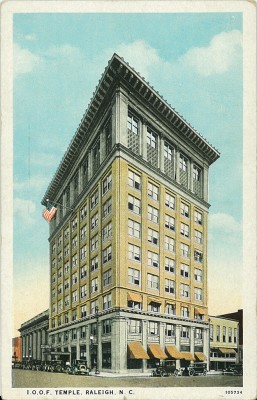
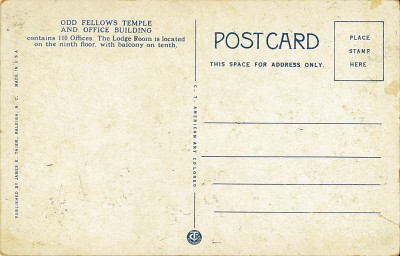

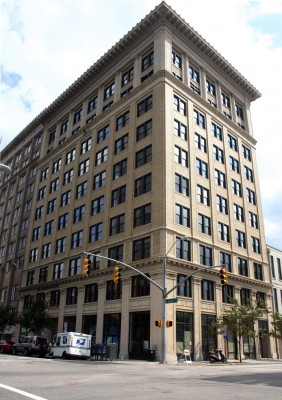
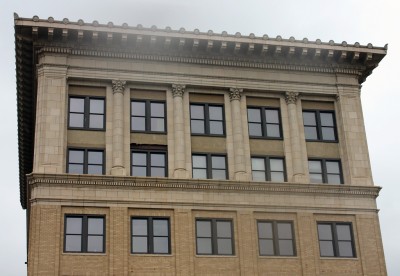
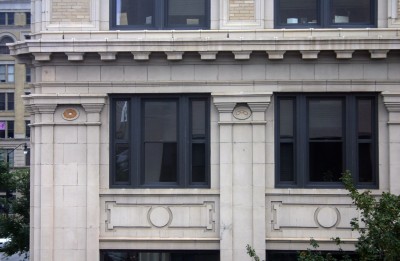


 Sign up for the Newsletter
Sign up for the Newsletter
04/05/2013
I spy the edge of a building that will soon be revealed in its original state, don’t I?
04/05/2013
I don’t think so…wrong side of Salisbury Street, isn’t it?
04/05/2013
Ben, you are correct! Scaffolding will come down later this month!
04/08/2013
Wheeee!!